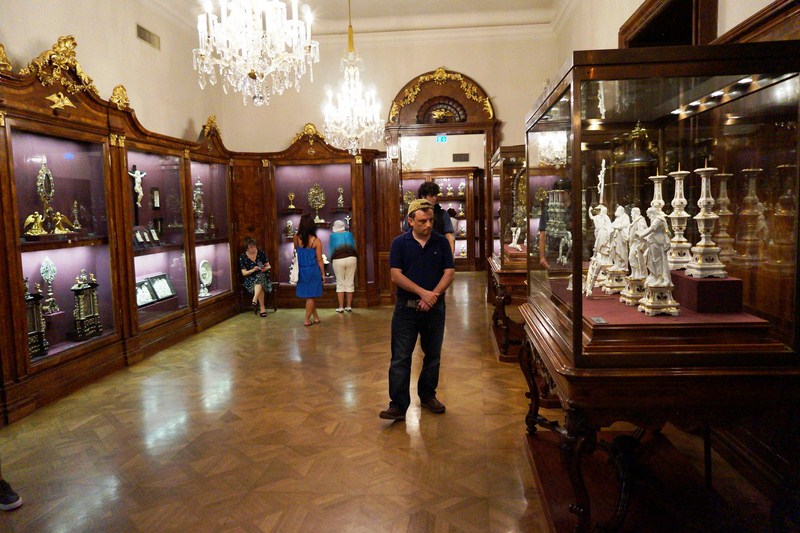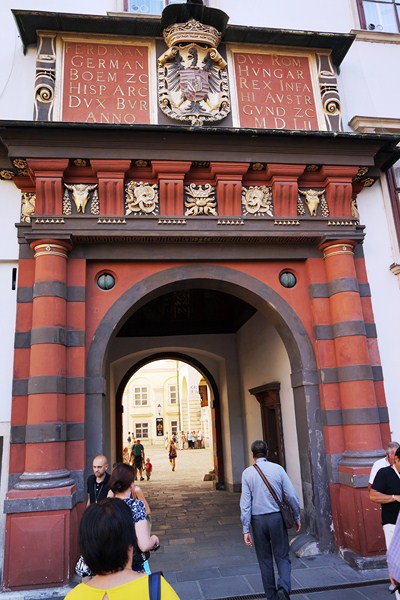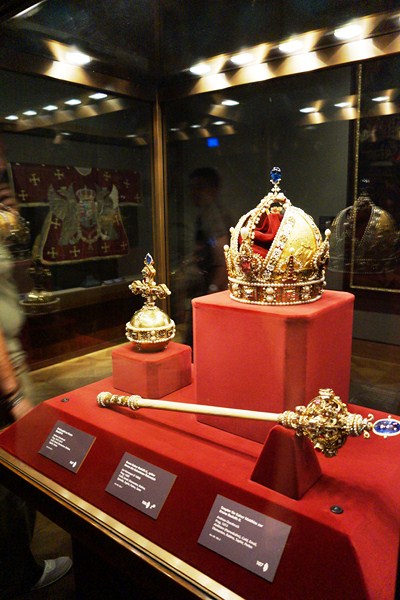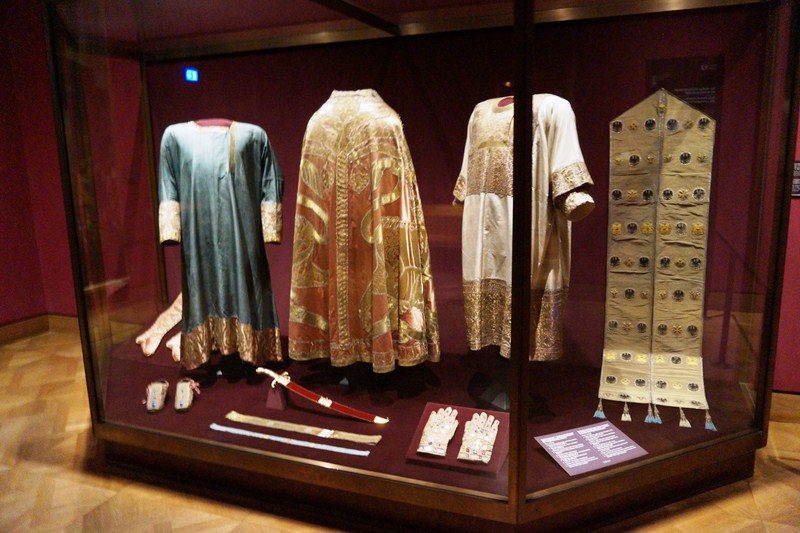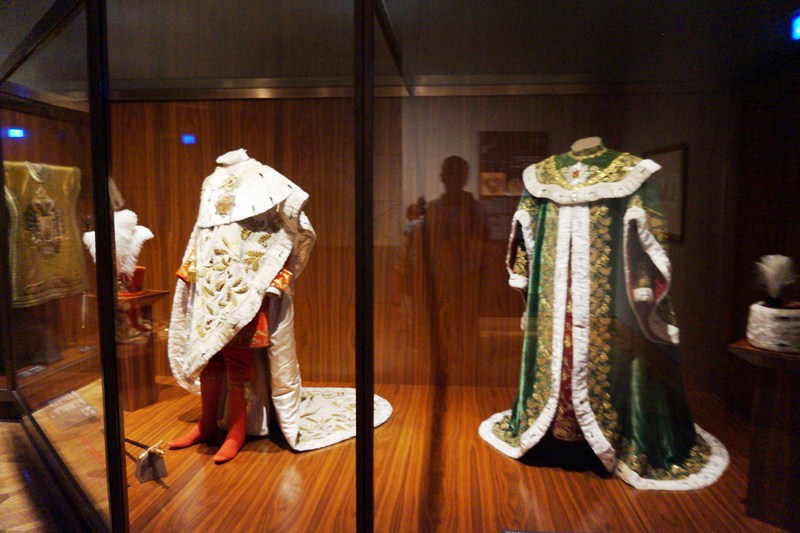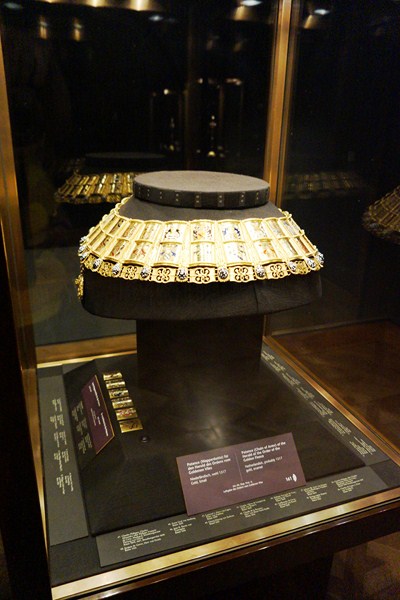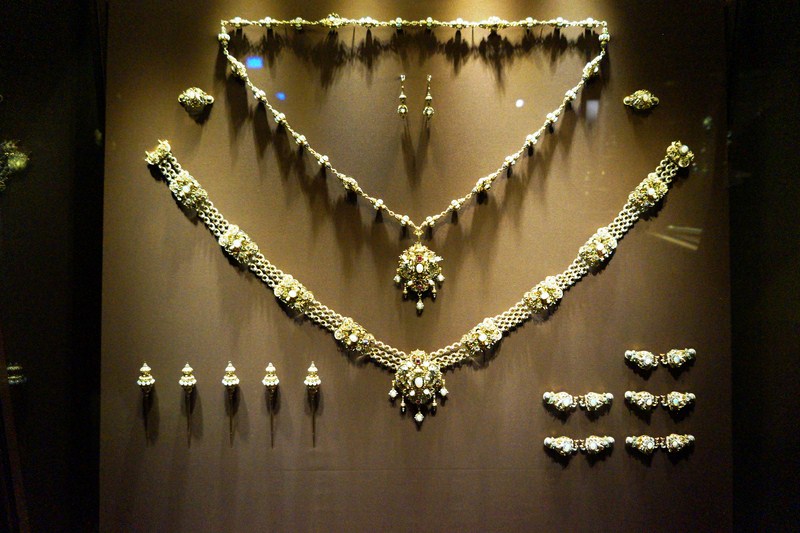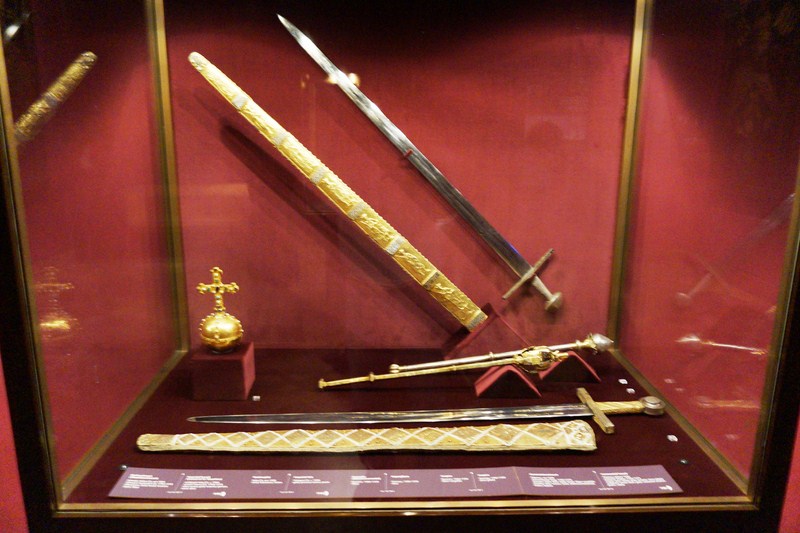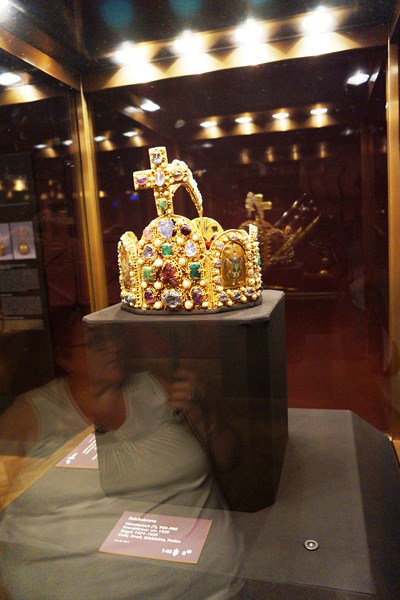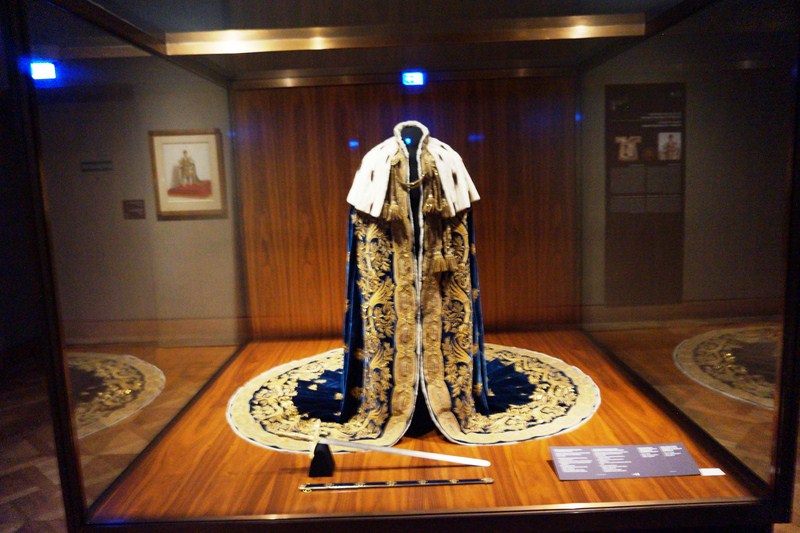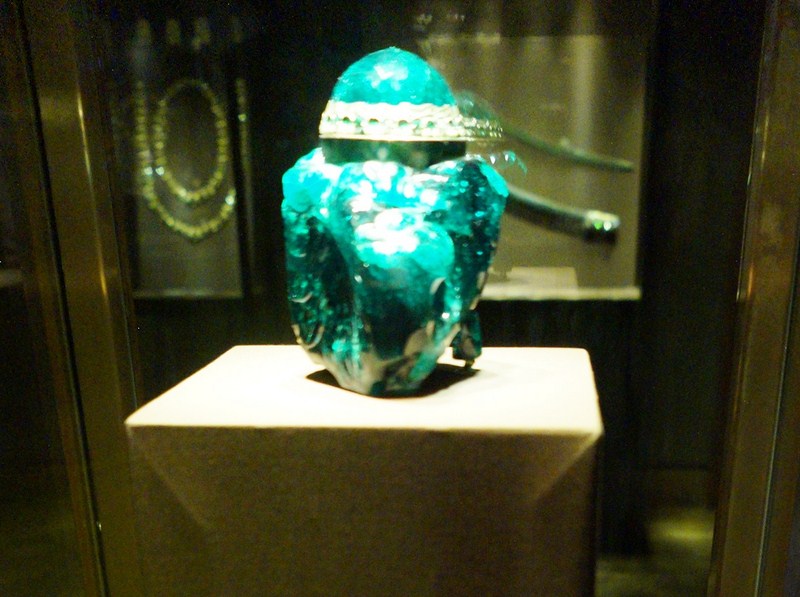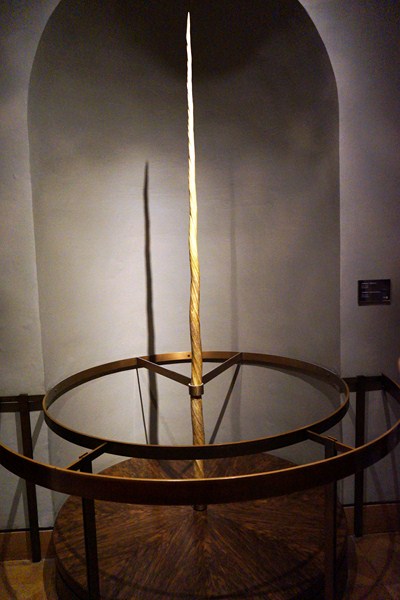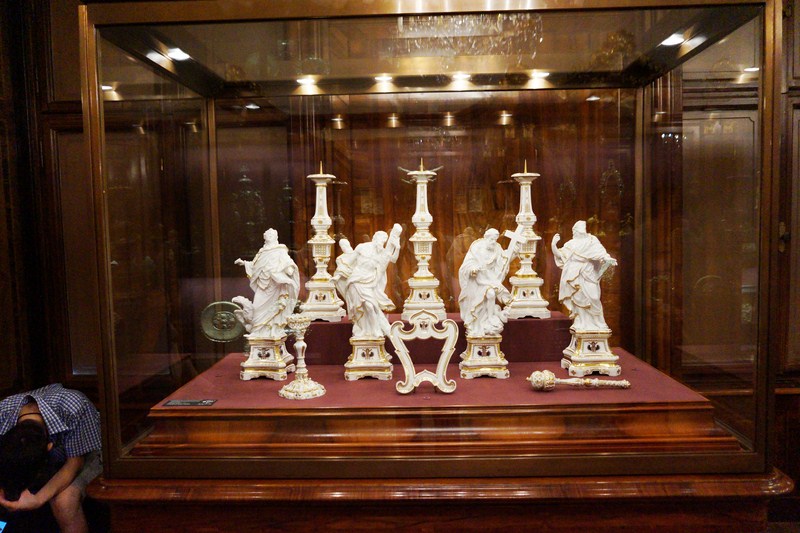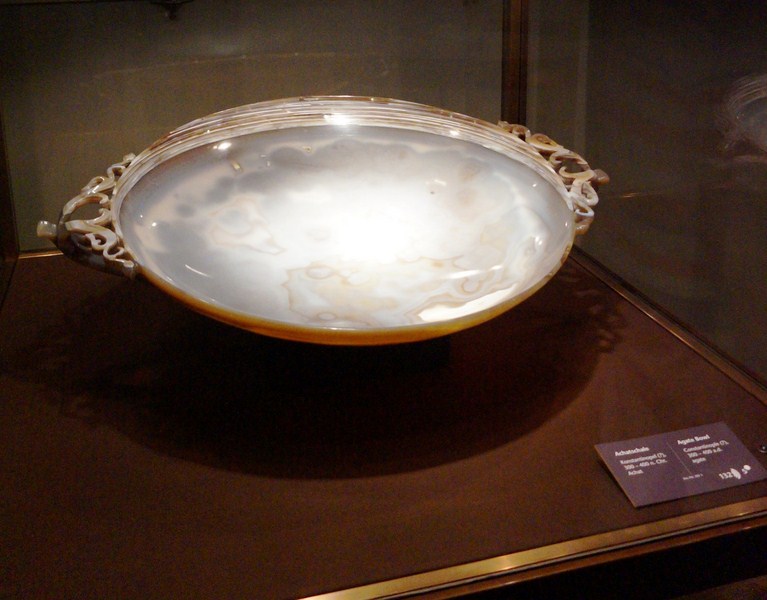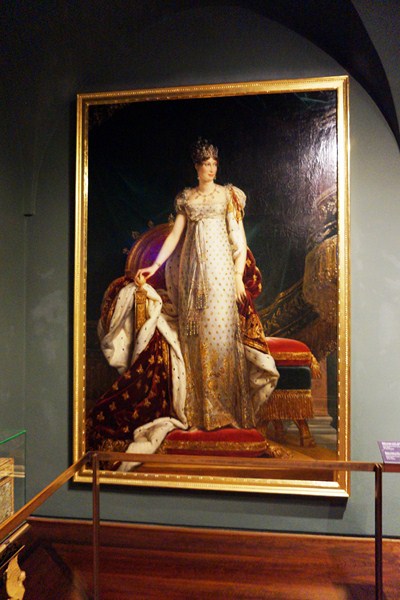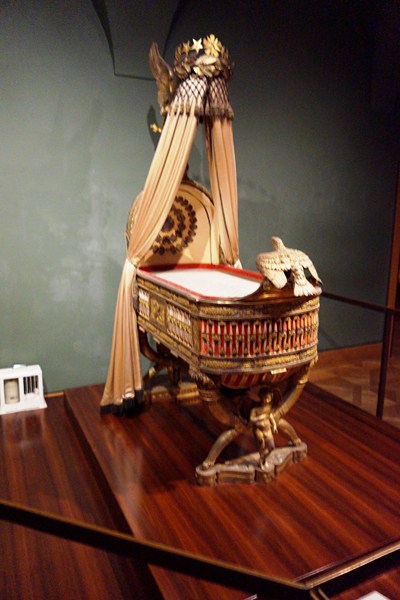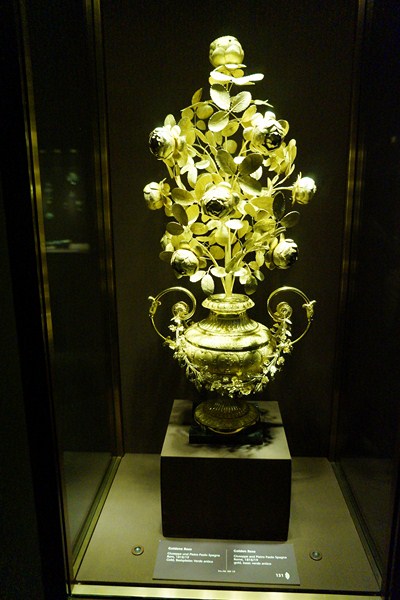After purchasing our combination tickets at the Neau Berg, we started our museum tour at the Imperial Treasury (Kaiserliche Schatzkammer), entering via the 13th century Schweizerhof (Swiss Courtyard, a reminder of the Swiss Guards once stationed here), the oldest part of the palace, which was rebuilt in the 16th century in the Renaissance style under Holy Roman Emperor Ferdinand I.
Located in the medieval part of the Hofburg Palace, next to the Hofburg Chapel, the Imperial Treasury, affiliated with the Kunsthistorisches Museum, is housed in 21 rooms. One of Vienna’s most important attractions, it is divided into two collections: the secular collection (subject to the responsibility of the Chamberlain or Oberkämmerer) and the ecclesiastical collection, covering over a thousand years of European history.
The secular collection is a valuable collection of numerous, fascinating and rare imperial treasures and insignia from the Imperial House of Habsburg (one of the most influential dynasties of the Christian Occident), set up from 1556 by the scholar Jacopo Strada, court antiquarian of Ferdinand I.
Among the treasures from the possessions are charming pieces of jewelry once worn by Empress Elisabeth; The regalia of the Archduchy of Austria (with the cord casing of the archducal hat made for the coronation of King Joseph II in 1764); the Burgundian Treasure from the 15th century (including magnificently embroidered robes, all part of the dowry of Mary the Rich at her wedding with Archduke Maximilian I in 1477), the original insignia (scepter and the orb) of the Kingdom of Bohemia; and the Treasure of the Order of the Golden Fleece ( from the heritage of Mary’s father Duke Charles the Bold), unique textile art from the Late Middle Ages: precious gold and silk embroidery of the highest quality transferred from Brussels in 1794.
The Imperial Regalia (Reichskleinodien), insignia and jewels of the Emperors and Kings of the Holy Roman Empire (transferred from Nuremberg in 1800) include the Imperial Crown of the Holy Roman Empire, circa 962, the legendary 8th century Holy Lance, and the Imperial Sword.
The Austrian Crown Jewels, comprising the personal crown (made in 1602) of Emperor Rudolf II (1552-1612) which, with the proclamation of the Austrian Empire in 1804, became the Imperial Crown of Austria, with sceptre and globus cruciger; the regalia worn by Emperor Ferdinand I of Austria on the occasion of his coronation as King of Lombardy–Venetia in 1835, as well as the vestments and other precious items of the Order of Saint Stephen of Hungary and the Military Order of Maria Theresa. The insignia of the imperial house of Austria, symbols of might and dignity for centuries, are set with valuable and intricately worked jewels, all witnesses to history and worth a fortune.
Also on display are various valuable jewels and precious stones that, due to their unique size, could not be fitted into the imperial crowns. Like all secular treasuries, it was designed to attest to the political power, glory and geographical reach of the Habsburgs. They include one of the world’s largest cut emeralds.
Also part of the treasury are the crown of the Transylvanian prince Stephen Bocskay and the two “inalienable heirlooms of the House of Austria”- an almost two and a half meter long narwhal tooth, acquired in Poland in 1540, which was thought to be the horn of a unicorn (Ainkhürn) and the Agate bowl (the largest carved bowl of its kind in the world), from Late Antiquity (4th century), which was thought to be the legendary Holy Grail.
Furthermore, there’s the Napoleonica artifacts) of Napoleon II (including his golden cradle with over a quarter of a ton of precious metals in it), Napoleon’s son known from his birth as the “King of Rome,” and his mother Archduchess Marie Louise.
The ecclesiastical collection, administered by the Hofburg parish priest, contains numerous religious treasures, including relics and objects ascribed to the private ownership of saints. They include a piece of the cross on which Jesus was crucified (including a nail hole, thus suggesting the wood is impregnated with his blood); a tooth from John the Baptist; a piece of the tablecloth used at the Last Supper; the nail used to pin Jesus’s right hand to the cross; and a tooth from St. Peter. There are also devotional images and altars, mostly from the Baroque era.
Imperial Treasury: Hofburg, Schweizerhof, 1010 Vienna. Tel: +431 525 24 4031. Website: www.khm.at. E-mail: info.kk@khm.at. Open 9 AM – 5:30 PM.
How to Get There:
Subway:
U1: Station Karlsplatz or Stephansplatz
U2: Station Karlsplatz or Volkstheater
U3: Station Herrengasse or Stephansplatz
U4: Station Karlsplatz
Tram:
D Burgring, 1, 2, 71 to any stop between Karlsplatz and Dr. Karl Renner Ring
Bus:
1A or 2A and 3A to Michaelerplatz or Habsburgergasse
HOP ON HOP OFF: Red Line: Kunsthistorisches Museum / Heldenplatz

